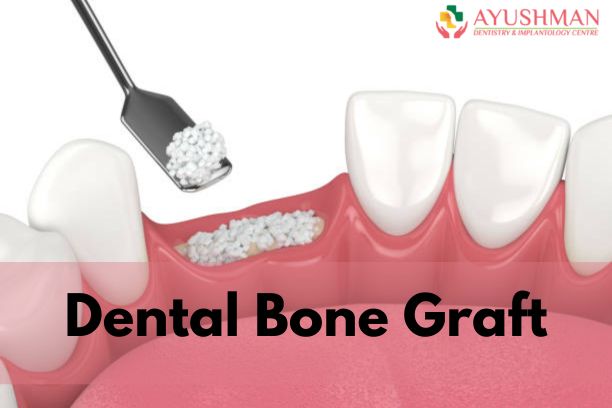What You Need To Know About A Dental Bone Graft

What You Need To Know About A Dental Bone Graft
A dental bone graft might be needed if you lose jawbone density or volume. This procedure is often done before dental implants or if a weak jawbone harms nearby teeth.
What is a dental bone graft?
What exactly is a dental bone graft? Well, it’s a procedure to restore volume and density to your jaw where bone loss has occurred. This can involve using bone material sourced from your own body (autogenous), from human tissue banks (allograft), or even from animal tissue banks (xenograft). Alternatively, synthetic materials (alloplast) might be utilized in certain cases.
How does a dental bone graft work?
After the bone graft is implanted, it serves as a framework for your body’s natural repair processes to take over. Essentially, it acts as a scaffold for the growth and regeneration of your own bone tissue. Additionally, your dental practitioner might opt to combine the bone graft with platelet-rich plasma (PRP), derived from a sample of your own blood, to enhance healing and tissue regeneration.
Who needs a dental bone graft?
Individuals experiencing bone loss in their jaw often require a dental bone graft. This intervention might be advised if you:
- Require a tooth extraction.
- Intend to restore a missing tooth with a dental implant.
- Need jaw reconstruction before denture placement.
- Exhibit bone loss in specific areas due to gum (periodontal) disease.
Are there different types of bone grafts?
Are there different types of bone grafts available? Certainly. Here are the four main types:
Socket preservation: Also known as ridge preservation, this graft is applied immediately after a tooth extraction to fill the void left by the missing tooth and prevent the collapse of the socket’s sides.
Ridge augmentation: If teeth have been missing for a period, the supporting jawbone might have reduced in thickness. Ridge augmentation aims to increase the width and volume of the jawbone, ensuring it can support implants or other restorative options effectively.
Sinus lift: When upper back teeth are missing, the maxillary sinuses can drop down and encroach upon the space formerly occupied by the tooth roots. To enable future implant placement without penetrating the sinus membrane, a sinus lift is performed to elevate the sinus to its correct position. A dental bone graft is then inserted beneath the sinus to create a sturdy foundation for dental implants later on.
Periodontal bone graft: Gum disease can lead to bone loss supporting the teeth, causing them to become loose. A periodontal bone graft is placed around a tooth to diminish mobility and offer additional support.
Typically, bone grafts for dental implants require complete healing before the implantation procedure. Recovery times vary depending on individual circumstances. In some rare cases, both a bone graft and a dental implant can be placed simultaneously, but this decision is made on a case-by-case basis.
What are the advantages of dental bone grafts?
Dental bone grafts offer several advantages for individuals experiencing bone loss in their jaws:
Improve Bone Density and Volume: Bone grafts help restore lost bone density and volume in the jaw, providing a stable foundation for dental implants or other restorative procedures. This is especially beneficial for individuals who have experienced significant bone loss due to factors like tooth extraction, gum disease, or trauma.
Enhance Stability for Dental Implants: Dental implants require sufficient bone support to be successful. By augmenting the jawbone through bone grafting, implants can be securely anchored, reducing the risk of implant failure and ensuring long-term stability and functionality.
Preservation of Facial Structure: Loss of jawbone density can lead to changes in facial structure and appearance, including sagging or a sunken facial profile. Bone grafts help maintain the natural contours of the face by restoring volume to the jawbone, which can improve overall facial aesthetics.
Support for Dentures and Bridges: For individuals who wear dentures or require dental bridges, a healthy and stable jawbone is essential for proper fit and function. Bone grafts can help rebuild the jawbone, providing better support and stability for these prosthetic devices, and enhancing comfort and chewing efficiency.
Preventing Continued Bone Loss: Bone grafting not only treats current bone loss but also acts to halt further deterioration of the jawbone. By stimulating bone regeneration and growth, bone grafts contribute to the long-term preservation of oral health and function.
Enhance Success Rates: With advancements in dental technology and techniques, bone grafting procedures have become highly successful with low complication rates. This means that patients can undergo bone grafting with confidence, knowing that they are likely to achieve favorable outcomes and enjoy the benefits of a restored smile and improved oral health.
Final Note
The impact of jawbone loss on your oral health cannot be overstated, potentially leading to a cascade of issues such as tooth mobility and loss. Dental bone grafts play a crucial role in enhancing your eligibility for dental implants and various other restorative treatments. If you suspect jawbone deterioration, seeking dental surgery can effectively restore not only your oral health but also your functionality and overall quality of life.







